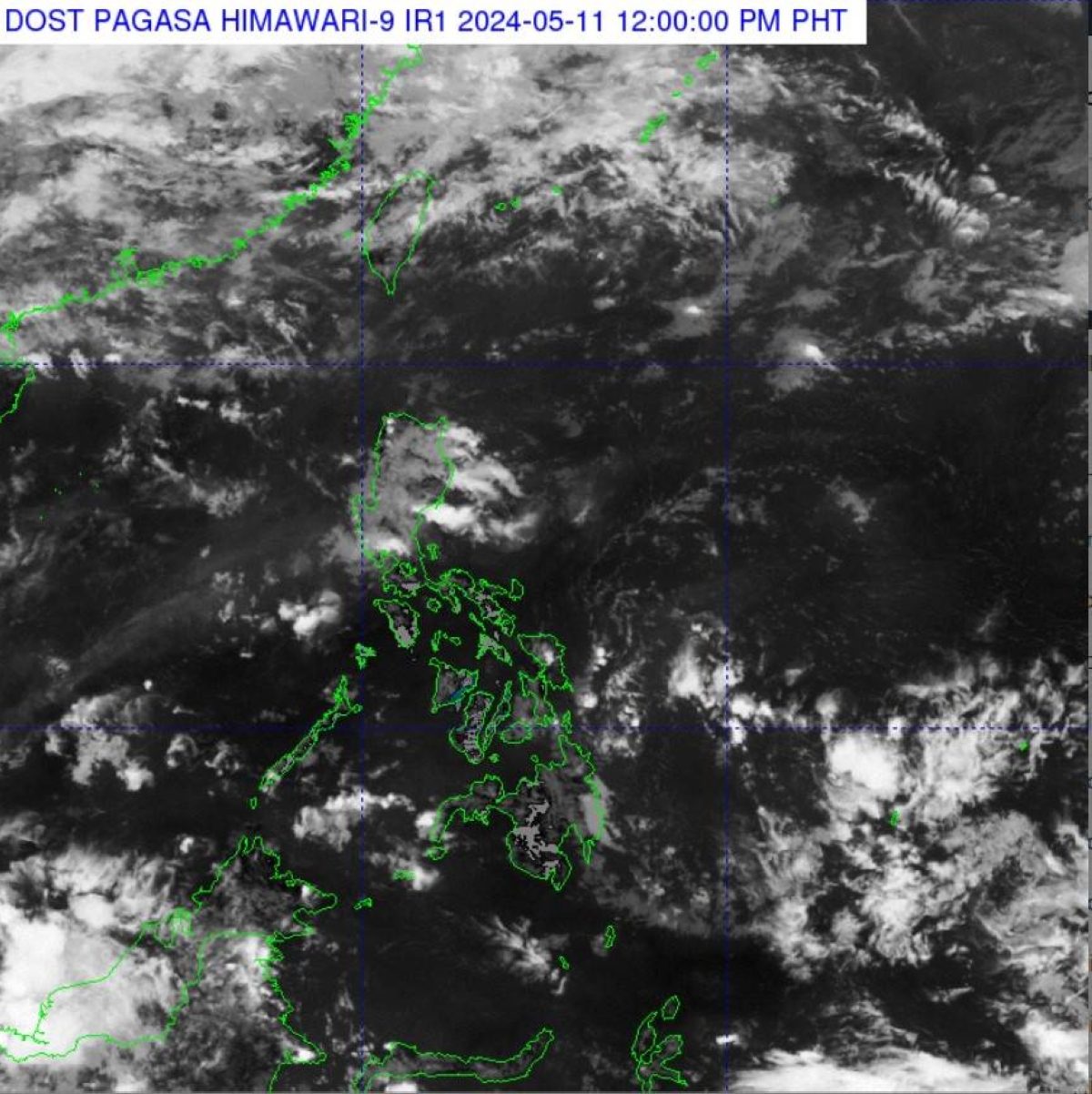Weather Update: Partly Cloudy Skies and Isolated Rain Showers Expected in Metro Manila and the Philippines
The Philippine Atmospheric, Geophysical, and Astronomical Services Administration (PAGASA) has announced that Metro Manila and the rest of the country will experience partly cloudy to cloudy skies, with isolated rain showers or thunderstorms. This weather forecast is applicable for Saturday.
According to PAGASA, the weather across the country is being influenced by the easterlies, warm winds that originate from the Pacific Ocean. These easterlies play a significant role in shaping the weather patterns in the Philippines.
It is important to note that the average temperature in the country ranges from 26.5 to 33 degrees Celsius. However, some cities may experience higher temperatures, reaching up to 38 degrees Celsius. This variation in temperature can be attributed to the geographical diversity and microclimates present in different regions of the Philippines.
In addition to temperature, humidity also plays a crucial role in the overall weather conditions. The average humidity percentage nationwide typically ranges from 58 to 79 percent. This level of humidity can contribute to the overall comfort or discomfort experienced by individuals in different areas of the country.
Furthermore, PAGASA has stated that light to moderate winds from the southeast will prevail, accompanied by slight to moderate coastal waters. These wind patterns are important to consider for individuals planning outdoor activities, especially those near coastal areas.
It is essential to stay updated with the latest weather forecasts and advisories provided by PAGASA to ensure personal safety and make informed decisions regarding travel or outdoor plans. The weather can change rapidly, and being prepared is key to avoiding any potential risks or inconveniences.
Understanding the Local Weather Patterns in the Philippines
The weather in the Philippines is influenced by various factors, including its geographical location, prevailing winds, and ocean currents. The country is located in Southeast Asia and is surrounded by bodies of water, such as the Pacific Ocean and the South China Sea. This unique positioning exposes the Philippines to different weather systems and makes it susceptible to typhoons and tropical storms.
The easterlies, mentioned earlier, are one of the prevailing wind patterns that affect the weather in the Philippines. These warm winds blow from the east, originating from the Pacific Ocean. As they move across the country, they bring moisture and can contribute to the formation of rain showers or thunderstorms.
The Philippines experiences two distinct seasons: the wet season and the dry season. The wet season typically starts in June and lasts until November, while the dry season spans from December to May. During the wet season, the country experiences a higher frequency of rain showers and thunderstorms, while the dry season is characterized by generally clearer skies and less rainfall.
It is important to note that weather conditions can vary significantly between different regions of the Philippines. The country is composed of numerous islands, each with its own unique climate and weather patterns. For instance, areas located in the northern part of the country, such as Baguio City, are known for their cooler temperatures due to higher elevations. On the other hand, cities located in the southern part, like Davao City, generally experience warmer temperatures throughout the year.
When visiting or residing in the Philippines, it is crucial to familiarize yourself with the local weather conditions and be prepared for any changes. It is advisable to carry an umbrella or raincoat during the wet season and to stay hydrated and protected from the sun during the dry season.
Impact of Weather on Daily Life and Activities
The weather in the Philippines plays a significant role in the daily lives and activities of its residents. Understanding the local weather patterns can help individuals plan their daily routines and make necessary adjustments to ensure comfort and safety.
For example, during the wet season, it is common for individuals to plan their outdoor activities, such as picnics or beach trips, around the weather forecast. Being aware of the possibility of rain showers or thunderstorms allows people to choose alternate indoor activities or reschedule their plans accordingly.
In agricultural areas, farmers rely heavily on weather forecasts to determine the best time for planting, harvesting, or protecting their crops. The timing of rainfall and the absence of extreme weather events are crucial factors that can significantly impact agricultural productivity and the livelihoods of farmers.
Additionally, the tourism industry in the Philippines is heavily influenced by the weather. Many tourists visit the country to enjoy its beautiful beaches, islands, and outdoor attractions. The weather conditions, particularly during the dry season, can greatly affect the number of visitors and the overall tourism experience. Therefore, tourism operators and travelers alike closely monitor weather forecasts to plan their trips and activities accordingly.
In conclusion, the weather in the Philippines, including Metro Manila and other regions, is characterized by partly cloudy to cloudy skies, with isolated rain showers or thunderstorms. The easterlies, warm winds originating from the Pacific Ocean, influence the weather across the country. It is important to consider the local laws, customs, and geographical diversity when interpreting weather forecasts and advisories. By staying informed and prepared, individuals can navigate the weather conditions in the Philippines and ensure their safety and comfort.







